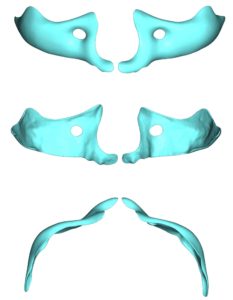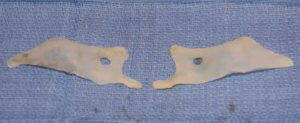The most common implant method of augmentation above the jawline are cheek implants. While not quite as historic as chin implants, cheek implants have been around for decades. While they can be effective for the properly selected patient, their midfacial effects are limited to the anterior malar and submalar regions of the face with today’s preformed standard styles and sizes.




The Midface Mask Implant can pull the entire midface forward. With the exception of the nose, upper lip and occlusion, it has a similar effect to that of a LeFort III osteotomy advancement. And would be an appropriate approach in cases of mild to moderate midface deficiencies where the occlusion is not needed to be changed.
Dr. Barry Eppley
Indianapolis Indiana




